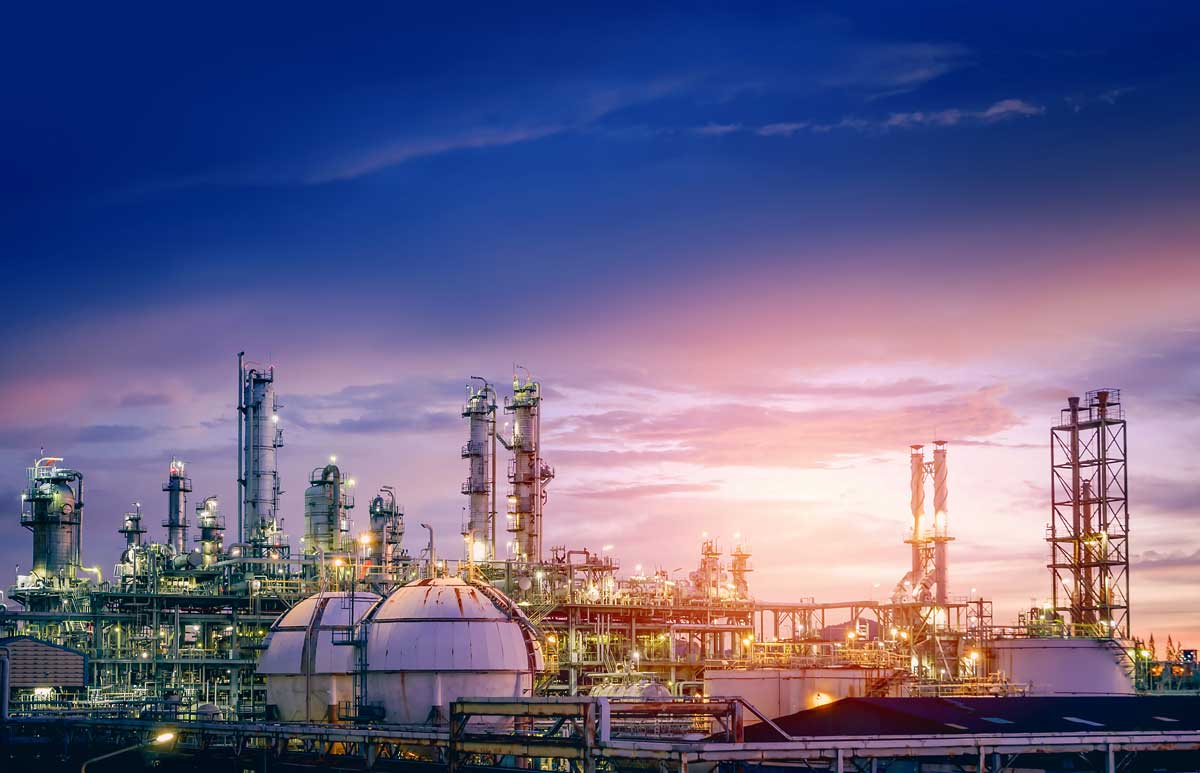How a Southern California Refinery Mastered Power Generation and Cooling with MeeFog Technology
Gas Turbine Inlet Air Cooling
Oil Refinery, Southern California
A major refinery in the Los Angeles area, dating back to the California oil rush days of the early 1900s, has grown to a capacity of over 130,000 barrels per day. The refinery spans two primary locations, located approximately five miles apart. One facility acts as the front-end of the refinery, receiving domestic crude via pipeline and foreign and domestic crude via tankers unloading at LA/Long Beach port. The other plant does the final refining and blending of the finished gasoline, diesel and jet fuels destined for the California, Arizona and Nevada markets.
“We were doing well for many years,” says the project manager. “But the refinery kept expanding, kept adding production units, and our MW kept getting tighter and eventually ran short.”
So in the mid-90s, the refinery upgraded to a CW 251B-12 turbine, which gave them 50 MW nominal output. A Heat Recovery Steam Generator (HRSG) supplies the refinery with more than 200,000 lbs. of steam per hour.
“This kept the power generation and refinery demand in approximate balance,” he continues. “But during the hot days, as is typical with any gas turbine, the heat makes the air less dense and the output drops by as much as 5MW.”
Learning from Neighbors
This refinery is far from being the only distributed generation facility in that neighborhood. For instance, there is the Harbor Cogen facility on Pier B Street in Wilmington with a GE Frame 7 that went into operation in 1988, the same year as the refinery’s initial 251B-10. There is also a refinery in Carson, and the Watson Cogeneration Plant next to the refinery, both of which utilize MeeFog inlet cooling to enhance their power generation. The project manager closely monitored the progress of these facilities.
Recovering Lost Power
While the mid-90s upgrade was adequate for a number of years, eventually it did need to boost its generation on hot days. At that point, however, the company didn’t need to launch into a research project to determine what was best.
“I am aware of all the cooling technologies and have evaluated all those for more than ten years,” says the project manager. “I knew on the spot that fogging was the least cost, and most effective way to go.”
He explains that the company chose MeeFog to provide the system because it has the most applications worldwide and the most proven technology.
“You have to make absolutely sure your air flow path from the fog system going down to the GT inlet must be super clean and free of rust or any particles that can get washed off from the walls or silencers,” he adds.
Challenge:
The refinery faced increasing demand for energy due to plant expansion, particularly on hot days when the gas turbine’s output dropped, creating a shortfall in power supply.
Solution:
Implementing a MeeFog system, effectively cooling the inlet temperature by up to 30 degrees Fahrenheit and boosting the turbine’s output by 5 MW, bringing it back to its nominal rating and resolving the power deficit.
Installation Specifications:
The Meefog system was installed in October 2011. An array with 429 fogging nozzles was installed just downstream of the air filter. The system has 11 operating stages, which can provide up to 30 degrees of cooling, allowing the inlet temperature to be controlled within a few degrees. The automatic control system is set to operate whenever the temperature exceeds 50 degrees. Maintenance on the system is minimal and involves only changing the pump oil on schedule and checking during the annual turnaround to see if any of the nozzles are plugged.
“During the performance tests, we dropped from 100 degrees to 70 degrees F at the inlet,” the project manager says. “We gained 5 MW which brought us back up to the nominal rating.”
Results:
The 14 stages of wet compression are tied into the gas turbine controls so the grid authority has control over the amount of power augmentation via the automatic generation signal. This allows for seamless control of the amount of power augmentation above base load as required by the grid authority. Prior to the installation, the MHPS 501F turbines with evaporative coolers produced 164.2 MW each. This was increased to 180 MW with Wet Compression. The systems gave the plant a total of 64 MW of additional power to sell into the Mexican grid.

Client Benefits using MeeFog Technology:
- Boost gas turbine output by cooling the inlet air
- Minimal maintenance required
- Easy retrofit and rapid installation
“If you need extra power, I recommend fogging as an option. It is the cheapest and fastest way to get power. — Project Manager, Southern California Oil Refinery
Resources:
Learn more about our cost-effective solutions to help meet increased power demands.



